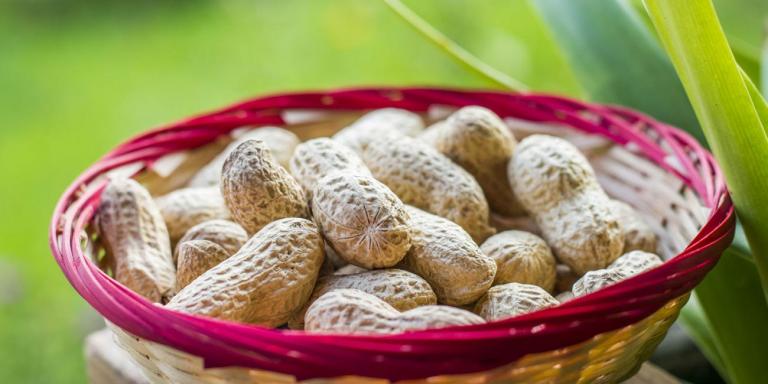In the 1950s, children were weaned on peanut butter, carrying the requisite PB&J to school in our lunch boxes and snacking on it after school.
Condemned as high in calories and fat in the late 1980s and early 1990s when low-fat eating was all the rage, peanuts and their products were relegated to the back of the pantry for the first time since World War II.
Now it turns out that our moms were right, after all.
Good for You
Peanuts are classified as legumes, the same food family that includes peas, beans, and lentils. High in protein and a good source of niacin and vitamin E, peanuts are climbing aboard the health train. Recent research finds that the peanut (along with its butter, which is by law 90 percent peanuts) contains antioxidants.
Like red wine and grapes, this legume can help inhibit heart disease and reduce the risk of cancer. Diets high in monounsaturated fats from peanuts, peanut butter, and peanut oil were found preferable to a strict low-fat diet "because of more favorable effects on the cardiovascular disease (CVD) risk profile," researchers write.
Peanuts and peanut-product diets lowered CVD risk up to 21 percent, compared to a 12 percent reduction seen in subjects following the National Cholesterol Education Program Step II diet. Another study finds consuming peanuts increases the intake of vitamins A and E, folate, calcium, magnesium, zinc, iron, and dietary fiber, while lowering intake of saturated fat and cholesterol.
Despite eating more calories, subjects in this investigation experienced no weight gain.
Peanuts can also help regulate blood sugar. Harvard researchers find "potential benefits of higher nut and peanut butter consumption in lowering risk of Type 2 diabetes in women."
Peanuts & Protein
A one-ounce serving of peanuts can provide 10 percent of our daily protein requirement.
High in vitamins and minerals and low in sodium, peanuts are now thought to aid weight loss. Because they are high in fiber, eating them provides a sense of fullness.
But any evidence of weight loss associated with peanuts must be coupled with the caveat of moderation. An ounce of peanuts--a mere handful and nearly 200 calories--goes a long way. For the greatest health impact, choose unsalted dry-roasted peanuts and peanut butter without added fats and sugars.
Peanut Allergies
Food allergies account for 30,000 emergency room visits every year. While some allergies (egg, milk, and soy) can be outgrown, a peanut allergy tends to remain stable over time.
Sensitization to this legume begins very early in life. One study finds that 80 percent of people allergic to peanuts developed sensitivity at their first exposure, which could even include a nursing mother's breast milk.
Although less than 1 percent of Americans have an allergy to peanuts, the condition causes 50 to 100 deaths from allergic reactions each year. If anyone in your family or your spouse's has food allergies, delay introducing peanuts and shellfish to your kids.
Parents need to alert daycare providers, schools, and others to their child's food allergies.
Labeling Food Allergens
The U.S. Food and Drug Administration now requires food manufacturers to list the eight most common allergens--responsible for 90 percent of adverse reactions--on their labels.
These allergens include:
- crustacean shellfish
- eggs
- fish
- milk
- peanuts
- soy
- tree nuts
- wheat
Unfortunately, as allergist Steven M. Kernerman, DO, cautions, not all food products carry the new allergen labeling, causing some confusion. The best way to check is by carefully reading the "Contains" list, which uses plain English instead of the euphemisms on the ingredients list.
For example, the "Contains" list must say milk, not casein, lactoglobulin, or whey; or eggs rather than lysozyme, ovalbumin, or mayonnaise. Experts advise parents to introduce children gradually to common allergenic foods. Note any complaints or reactions to these foods--they may signal allergies.

